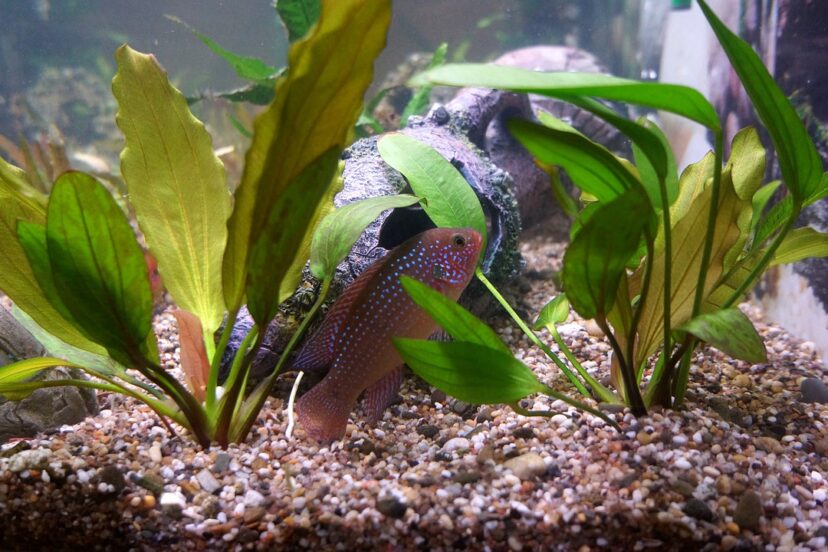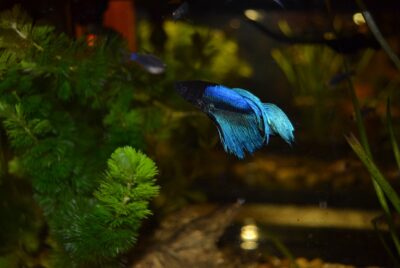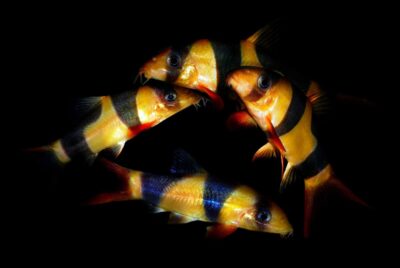Can Aquarium Plants Grow in Sand
As a passionate fishkeeping enthusiast and avid aquarium plant lover, I often find myself pondering over the various substrate choices available for aquatic plants. One question that frequently arises is can aquarium plants can grow in sand. In this article, we will explore the topic in-depth, providing helpful suggestions and reasons for our recommendations.
Understanding Aquarium Substrates
Before delving into the specifics of sand as a substrate, it is essential to understand the importance of substrates for aquarium plants. A substrate serves as the foundation for plant growth, providing support, anchorage, and access to vital nutrients. Different types of substrates exist, including gravel, soil, and sand, each with its own set of advantages and disadvantages.
Can Sand Support Plant Growth?
When considering sand as a substrate for aquarium plants, it is crucial to evaluate its ability to support plant growth effectively. Sand possesses unique characteristics that can influence plant development. These include grain size, density, and nutrient retention capabilities. By understanding these factors, we can determine the feasibility of using sand as a substrate.
Advantages of Using Sand for Aquarium Plants – (Can Aquarium Plants Grow in Sand)
When it comes to choosing a substrate for aquarium plants, sand offers several unique advantages that make it a popular choice among fishkeeping enthusiasts. Let’s delve deeper into the benefits of using sand as a substrate and explore how it can contribute to the growth and overall health of aquarium plants.
1. Improved Root Development and Anchorage
One of the significant advantages of using sand as a substrate is its fine grain size. Unlike larger gravel or pebbles, sand provides a more stable and secure environment for the roots of aquarium plants. The fine grains allow the roots to penetrate easily and anchor themselves firmly, promoting robust root development. This, in turn, enhances the overall stability and health of the plants, preventing them from being uprooted or destabilized by fish activity or water currents.
2. Enhanced Nutrient Circulation
Sand substrates have a unique ability to promote efficient nutrient circulation within the aquarium. The small gaps between sand grains create channels for water flow, allowing nutrients to circulate more freely. As water percolates through the substrate, it carries essential nutrients, such as nitrogen, phosphorus, and potassium, to the plant roots. This improved nutrient circulation ensures that aquarium plants have access to the necessary elements for growth and development.
3. Natural and Aesthetic Appeal
Sand substrates contribute to the natural aesthetics of an aquarium, providing a visually pleasing and realistic environment that mimics the natural habitats of aquatic plants. The fine texture of sand resembles the sediment found in rivers, lakes, and ocean floors, creating an authentic underwater landscape. This natural appeal adds depth and dimension to the aquarium, making it visually captivating and enjoyable to observe.
4. Versatility in Aquascaping – (Can Aquarium Plants Grow in Sand)
Sand offers excellent versatility when it comes to aquascaping and designing the layout of an aquarium. Its fine texture allows for intricate detailing and precise placement of plants, rocks, driftwood, or other decorative elements. With sand as the substrate, aquarists can create beautifully sculpted hills, valleys, or even simulate a sandy beach area within the aquarium. The creative possibilities are endless, providing the freedom to design unique and visually stunning underwater landscapes.
5. Gentle on Delicate Fish Species
Certain fish species, such as bottom-dwelling catfish, loaches, or some species of cichlids, have specialized mouths or barbels that are sensitive to rough or abrasive substrates. Sand provides a gentle and comfortable substrate for these delicate fish, as they can sift and forage through the fine grains without injuring their sensitive body parts. By choosing sand as a substrate, fishkeepers can create a safe and suitable environment for their fish while still supporting the growth of aquatic plants.
6. Reduced Risk of Accumulated Debris
Compared to gravel or larger substrates, sand has a lower risk of accumulating debris and waste materials. The small grain size of sand prevents uneaten food, decaying plant matter, and fish waste from sinking deep into the substrate, making it easier to clean and maintain. Regular vacuuming of the sand surface during water changes helps remove any accumulated debris, ensuring a cleaner and healthier aquarium environment.
7. Safe for Burrowing Species
Sand is an ideal substrate for fish species that naturally exhibit burrowing behavior. Certain fish, such as sand-sifting gobies or burrowing cichlids, require a soft and fine substrate to create burrows or sift through the sand in search of food. Sand provides a suitable medium for these species, allowing them to engage in their natural behaviors without causing harm or discomfort.
Considerations for Growing Aquarium Plants in Sand – (Can Aquarium Plants Grow in Sand)
While sand can be a suitable substrate for aquarium plants, certain considerations should be taken into account for successful plant growth. Firstly, it is crucial to choose the right type of sand that is specifically designed for aquarium use. Some sands may contain harmful chemicals or impurities that can adversely affect aquatic life. Therefore, selecting a reputable brand or consulting with experienced aquarists is highly recommended.
Furthermore, sand alone may not provide all the essential nutrients required for plant growth. It is advisable to supplement the substrate with root tabs or liquid fertilizers to ensure plants receive an adequate supply of nutrients. Regular monitoring of water parameters such as pH, hardness, and nutrient levels is also essential to maintain a healthy environment for both plants and fish. Additionally, routine maintenance practices such as vacuuming the sand surface to remove debris and preventing excessive algae growth will contribute to the overall well-being of the aquatic ecosystem.
Plant Selection for Sand Substrates – (Can Aquarium Plants Grow in Sand)
Certain plant species are particularly well-suited to grow in sand substrates. These plants have adapted to thrive in environments with limited nutrient availability and can absorb nutrients efficiently from the sand. Examples of suitable plant species include Java Fern, Anubias, Vallisneria, and Cryptocoryne. However, it is important to note that some plant species may require additional supplementation or specific care. Researching individual plant requirements and consulting with experts will help ensure a successful and vibrant underwater garden.
Maintaining a Healthy Aquatic Environment – (Can Aquarium Plants Grow in Sand)
In the pursuit of flourishing aquarium plants, it is essential to strike a balance between plant needs and the well-being of fish and other aquatic inhabitants. Regular water testing and maintenance routines play a vital role in creating a harmonious environment. Monitoring and adjusting water parameters such as temperature, pH, ammonia, and nitrate levels will promote healthy plant growth and prevent adverse effects on fish. Additionally, managing plant growth by pruning and thinning out densely grown areas will prevent overcrowding and maintain optimal conditions for all aquarium inhabitants.
Conclusion
In conclusion, sand can indeed serve as a suitable substrate for aquarium plants, providing a range of benefits such as improved root development, nutrient circulation, and aesthetic appeal. By selecting the right type of sand, supplementing nutrients as needed, and maintaining a balanced aquatic environment, enthusiasts can create a thriving underwater garden. Remember, experimenting with different plant species and fine-tuning care routines is part of the exciting journey of fishkeeping and aquascaping. Embrace the versatility of sand and let your creativity flourish!
Frequently Asked Questions – (Can Aquarium Plants Grow in Sand)
Q: Are there any specific types of sand recommended for aquarium plants?
A: Yes, it is recommended to use aquarium-specific sands that are free from harmful chemicals or impurities. Brands like XYZ Sand or ABC Aquatic Sands are reputable choices.
Q: Can I use sand from the beach or my backyard in my aquarium?
A: It is not advisable to use sand from unknown sources, as it may contain harmful substances or impurities that can harm aquatic life. It is best to use sand specifically designed for aquarium use.
Q: Do I need to add fertilizers when using sand as a substrate?
A: Yes, while sand provides a good foundation, it may not contain all the necessary nutrients for plant growth. Supplementing the substrate with root tabs or liquid fertilizers will ensure plants receive adequate nutrition.
Q: How often should I clean the sand in my aquarium?
A: Cleaning the sand surface should be a part of routine aquarium maintenance. Depending on the accumulation of debris and waste, it is recommended to vacuum the sand every 1-2 weeks during regular water changes.
Q: Are there any plants that cannot grow in sand?
A: While most aquarium plants can grow in sand, some species may require additional substrates or specific conditions for optimal growth. It is important to research individual plant requirements and consult with experienced aquarists to determine the best substrate choice for specific plant species.




